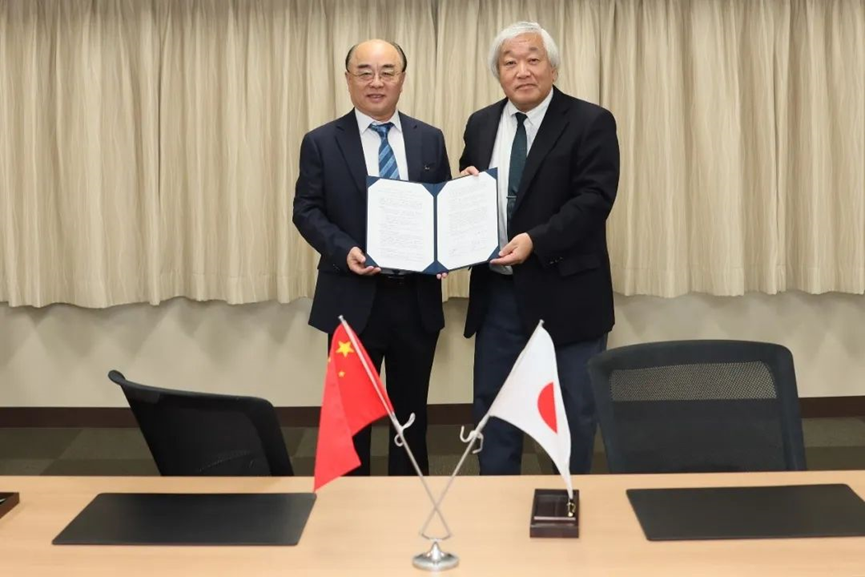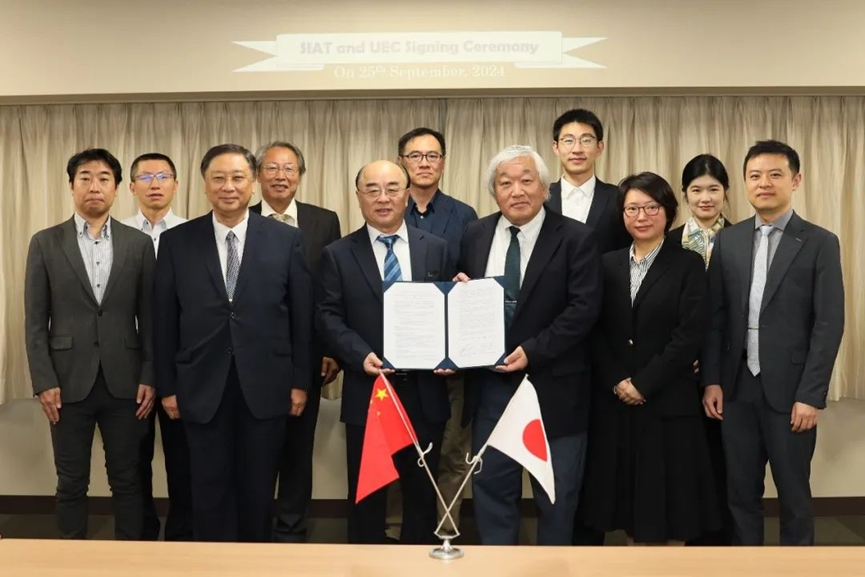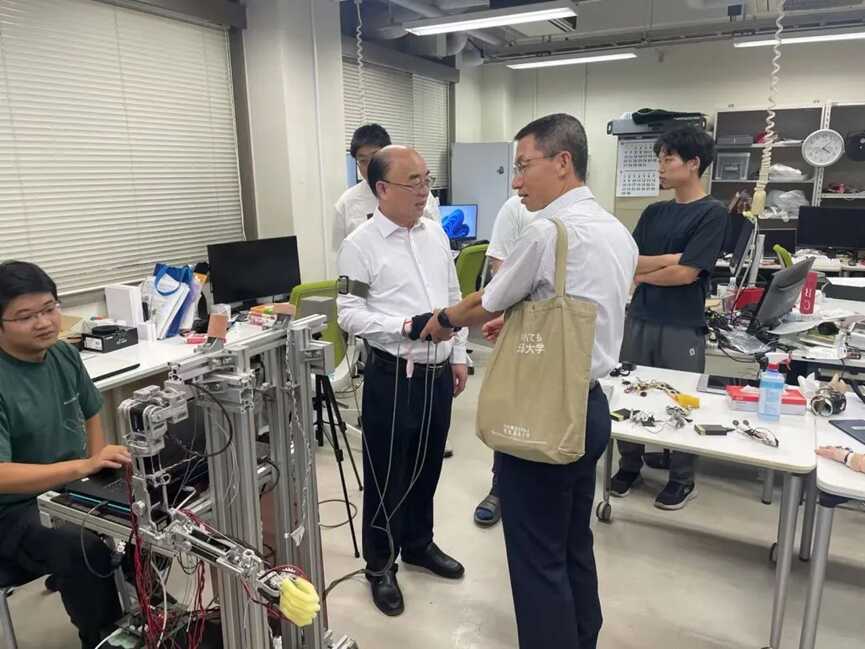Signing Ceremony for the Sino-Japan Joint Laboratory Partnership between SIAT's Neural Engineering Research Center and UEC
Date:05-11-2024 | 【Print】 【close】
On September 25, 2024, a delegation from the Shenzhen Institutes of Advanced Technology (SIAT), Chinese Academy of Sciences (CAS), visited the University of Electro-Communications (UEC) in Japan to participate in the signing ceremony for the establishment of the Sino-Japan Joint Laboratory for Human-Machine Interaction and Functional Rehabilitation.
The delegation was led by Prof. LI Guanglin, Director of Shenzhen Institute of Advanced Integration Technology, CAS & The Chinese University of Hong Kong (CUHK), and Research Center for Neural Engineering of SIAT.
The University of Electro-Communications, with a history spanning over 100 years, is a prestigious university ranked 36th among Japanese universities in 2023. The university has achieved remarkable success in fields such as life and health sciences, robotics, intelligent materials, and optics. In recent years, the Research Center for Neural Engineering of SIAT, together with UEC, has accumulated a wealth of research achievements in intelligent prosthetics for adults and children, hand rehabilitation exoskeletons, and multi-source information fusion decision-making algorithms through collaboration on various projects supported by the National Key Research and Development Program of Ministry of Science and Technology, the Chinese Academy of Sciences, and several programs from Guangdong Province and Shenzhen City.
During the ceremony, UEC President TANO Shunichi and Prof. Director LI Guanglin delivered speeches, both expressing the importance of international scientific and technological cooperation in driving innovation and breakthroughs. They highlighted the significance of the joint establishment of the Sino-Japan Joint Laboratory for Human-machine Interaction and Functional Rehabilitation based on the solid foundation of years of collaboration. They also hoped that this partnership would deepen collaborative research in related fields and expand opportunities, creating an open, cooperative, and mutually beneficial channel for international scientific and talent exchange.
"We envision this joint lab becoming an open platform for collaborative research and international talent exchange," said Prof. LI in his speech, "while fostering breakthroughs that will benefit both sides."
After the speeches, both parties signed the international joint laboratory agreement and gathered for a group photo to commemorate the occasion.

Signing of the Sino-Japan Joint Laboratory Agreement.
Left: Director LI Guanglin. Right: President TANO Shunichi. Credit: UEC

Group photo of China-Japan attendees.
Front row, from left: MASAMOTO Kazuto, OYA Kazuaki, LI Guanglin, TANO Shunichi, JING Xiaobei, YONG Xu.
Back row, from left: JIANG Yinlai, YOKOI Hiroshi, CHOO Cheow Keong, WANG Xin, ZHANG Xiaomin. Credit: UEC
Once the agreement was signed, Prof. CHOO Cheow Keong and Prof. YOKOI Hiroshi from UEC introduced an overview of the university, along with a retrospective on the rationale and background of the international joint laboratory.
"I am confident that this partnership will be a great success, as it will fully leverage the strengths of both sides," said Prof. YOKOI, "through our joint efforts, I believe we can achieve meaningful breakthroughs and create lasting benefits for both institutions."
Associate Profs JING Xiaobei and YONG Xu from SIAT then presented a detailed report outlining the research directions and focus areas of the joint lab, highlighting key scientific challenges and technical difficulties that need to be addressed. They emphasized the urgency and importance of collaborative efforts between the Chinese and Japanese teams.
After the ceremony, the delegation member visited the laboratories of Professors YOKOI Hiroshi and JIANG Yinlai, respectively. Professor YOKOI demonstrated a real-time acquisition system based on a flexible waterproof EMG sensor and showcased the actual gripping effects of prosthetic hands for both adults and children. Director LI discussed with Professor YOKOI about the limitations of the number of channels in the EMG sensors on affecting the rapid adaption of amputees and the trade-offs between the number of motors in prosthetic hands in terms of weight and movement diversity. Professor JIANG explained the ultra-low latency master-slave control robotic arm system and invited Director LI to experience operating it firsthand. They exchanged views on potential issues with spatial magnetic positioning of the human upper limb and the possibility of using multi-source information fusion for decision-making. Both sides expressed their intent to utilize the establishment of this international joint laboratory as an opportunity to further complement each other’s strengths through collaborative research and personnel exchange, aiming to combine their expertise for more fruitful outcomes.
The establishment of the international joint laboratory will focus on collaborative efforts in areas such as "personalized intelligent prosthetics," "autonomous rehabilitation wearable devices," "robotics technology for aging societies," and "neural-machine interfaces and multi-source information fusion decoding." The goal is to jointly address issues related to compensating, assisting, and rehabilitating limb motor functions for the elderly and disabled in response to the challenges posed by aging populations.

LI Guanglin in discussion with Professor YOKOI Hiroshi and his students. Credit: UEC

LI Guanglin is experiencing the ultra-low latency leader-follower control robotic arm system proposed by Professor JIANG Yinlai. Credit: UEC
Media Contact:
ZHANG Xiaomin; LU Qun
Email: xm.zhang@siat.ac.cn; qun.lu@siat.ac.cn